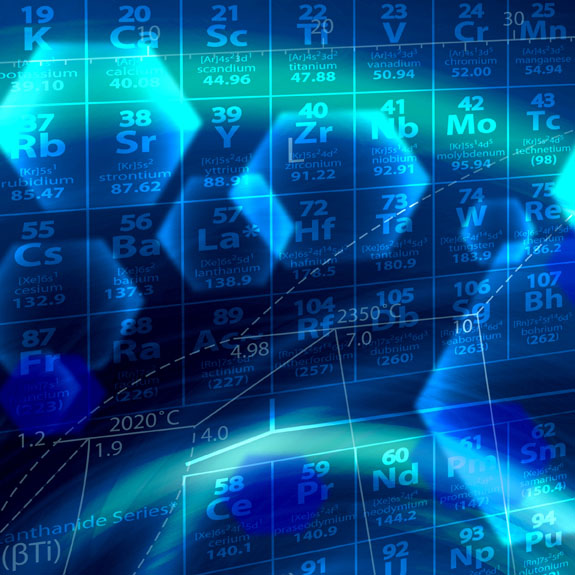 Many emerging technologies designed to use fossil fuels more cleanly and efficiently require components made of new materials that can withstand unprecedented temperatures, pressures, and corrosion levels. Developing these new materials was an arduous, time-consuming task of trial-and-error before researchers at the National Energy Technology Laboratory (NETL) began using one of the world’s top modeling tools—the NETL supercomputer—to design and model new metal alloys.
Many emerging technologies designed to use fossil fuels more cleanly and efficiently require components made of new materials that can withstand unprecedented temperatures, pressures, and corrosion levels. Developing these new materials was an arduous, time-consuming task of trial-and-error before researchers at the National Energy Technology Laboratory (NETL) began using one of the world’s top modeling tools—the NETL supercomputer—to design and model new metal alloys.
An alloy is a mixture of two or more metals in which the atoms of one metal replace, or occupy positions between, the atoms of the other in the crystal structure. Alloys are created to alter the mechanical properties of the base metal, to induce hardness, toughness, ductility, or other desirable properties. The supercomputer allows scientists to experiment with combining different metals for stronger alloys by running model simulations, instead of physically creating alloys in a laboratory setting and then testing them to gauge their effectiveness.
Advanced ultrasupercritical boilers, pressurized oxy-combustion boilers, and advanced turbines in power plants are just a few of the innovations that will contribute to cleaner use of fossil fuels. These advanced systems will operate at higher temperatures and pressures, in extreme environments, and will demand a service life span exceeding 100,000 hours. For these advanced energy systems, components such as superheater headers, turbine casings, rotors, and other parts will need to be constructed from new high-performance alloys to ensure reliable plant operation.
The NETL design and modeling tool that is enabling the faster evolution of new materials for these technologies is a 503 TFlops (trillion floating-point operations per second) supercomputer that researchers use every day to run complex model simulations to uncover energy and environmental technology breakthroughs related to the use of fossil fuels. The system, currently ranked 94th on the Top 500 list of the most powerful computers in the world, is capable of performing 503 trillion operations per second, about 1 million times faster than most high-end desktop computers.
Michael Gao, a researcher at NETL’s site in Albany, Ore., is one of the scientists working on new alloys to meet the materials challenges that new fossil energy technologies impose. He says the NETL supercomputer saves researchers time and manpower in the search for low-cost, high-efficiency, long-lifetime materials that can be used in emerging technologies. Gao said he uses the NETL supercomputer to design and model high-performance, high-entropy alloys for extreme environment applications.
“The high-performance computing cluster allows us to virtually design materials’ chemistries to match or exceed the required properties,” he said. “There are no limitations on the number of alloys in our simulations. Screening through hundreds and even thousands of alloys can be accomplished in a few months in computer simulations. The savings in materials cost, time, and manpower is tremendous compared to traditional trial-and-error type laboratory work.”
NETL’s supercomputer is operated by the laboratory’s Office of Research and Development, which works on next-generation technologies for minimizing the environmental impact of fossil fuel use while optimizing domestic energy development opportunities.
Chris Guenther, director of the Computational Science and Engineering Division at NETL, summed up the expanded horizons made possible by the supercomputer: “You are only constrained by your imagination.”
Each month, NETL and many other of the Energy Department’s national labs showcase their work in various areas that benefit the nation. This story is part of a series on the ways in which supercomputing is changing the way scientists conduct research and how the labs are driving high-performance computing to new heights. For more information, please visit the Energy Department’s national lab webpage.


